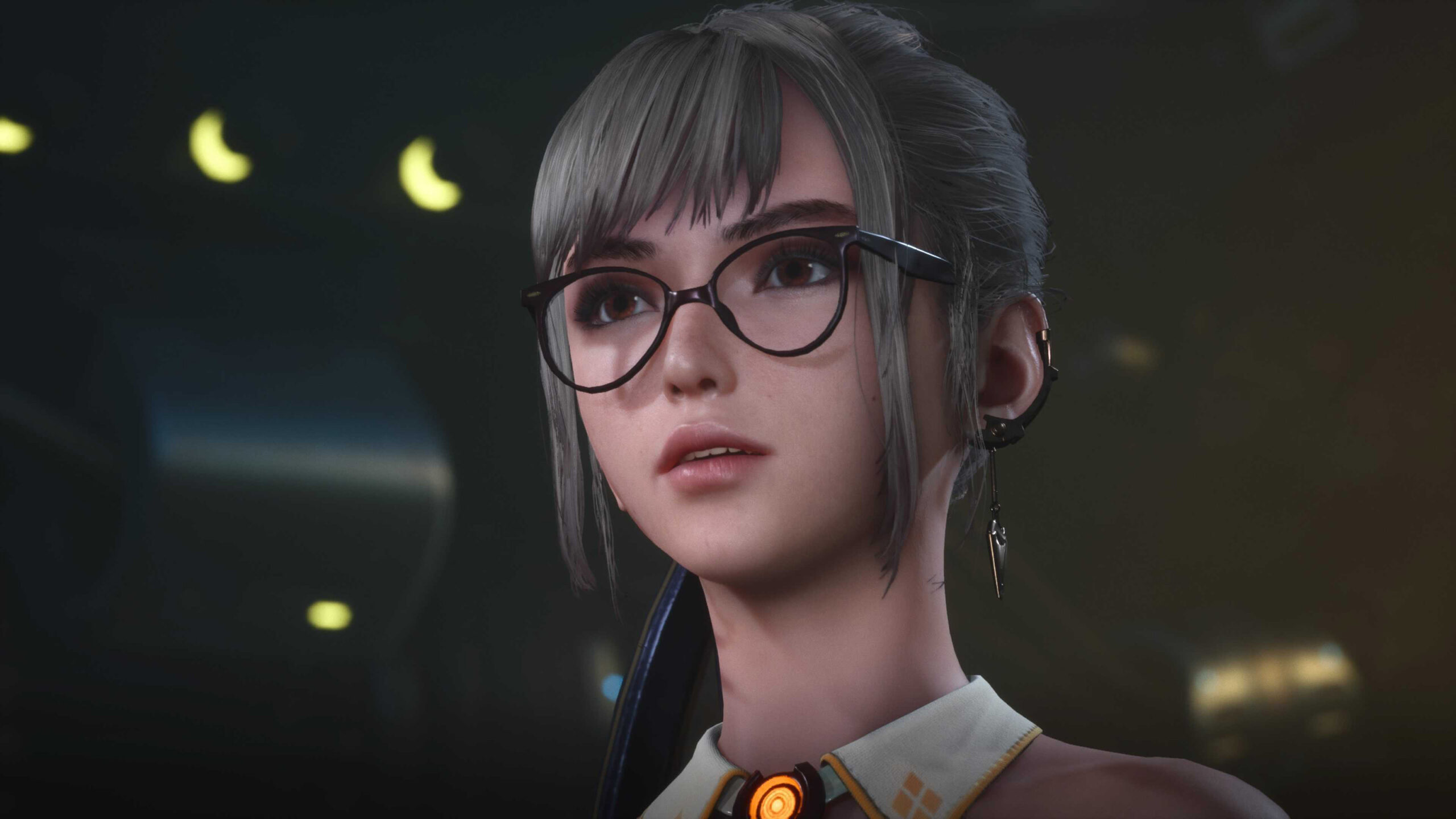
Stellar Blade understands what players want.
For years now, gamers have been begging for polished single-player experiences without any of the microtransactions or live service elements that have become so common. And that’s exactly what you get with Stellar Blade. It’s a beautiful, semi-linear action game with plenty of polish and style to spare.
It also has excellent physics.
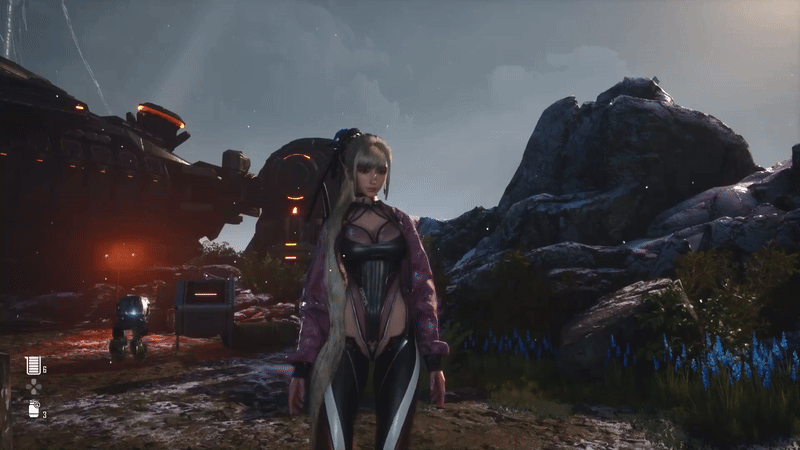
Seriously, look at that hair!
Oh, were you looking at something else? For shame, reader. For shame.
Who am I kidding? The game begs you to stare at EVE’s backside. The director said as much himself. It understands that your eyes might wander and knows that you might even be tempted to try something untoward, like, oh I don’t know… taking off your character’s clothes?
Not only is it possible, but the developers at Shift Up created a mechanic for that exact situation. By unequipping EVE’s clothing, you’re also removing her shields. Get hit once, you die.
In other words, the hornier the player, the harder it’ll be.

I’m not here to judge, though. I’ve already put over thirty hours into the game, and I’m still planning to go back to find some of the hidden collectibles to unlock the final outfits. But given that so much of the marketing for the game has been centred around EVE’s appearance, I thought it’d be good to address it upfront.
And to Shift Up’s credit, the character designs in the game are rad. Everyone in the world of Stellar Blade is visually distinct from one another. They may fall into Soulcalibur territory at times, but this is clearly a game made with passion and a unified vision. The developers knew what they wanted to create and they delivered.
Besides, EVE’s design isn’t even the most stimulating part of the game. We’ll get to that later.
Many of us believed the game’s combat would be similar to games like Nier or Bayonetta, but it actually falls more closely in line with something like FromSoftware’s Sekiro: Shadows Die Twice. There’s a heavy emphasis on timing your attacks to activate perfect parries and dodges. Depending on your gaming tastes, that might be a positive or a negative.
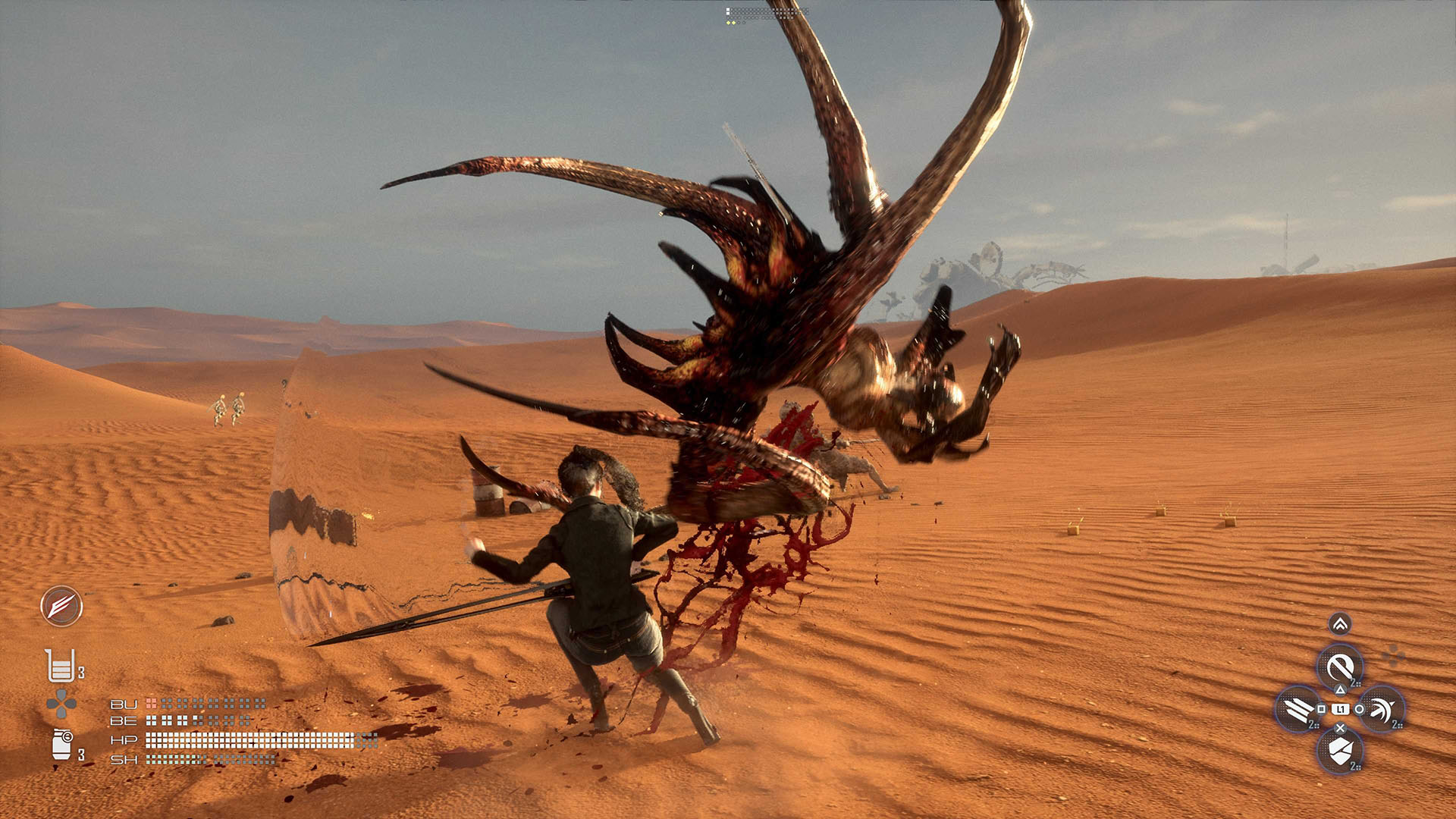
The combat here is far more forgiving than Sekiro and many of its contemporaries though, giving plenty of options to expand the timing window for parrying. Dying also doesn’t send you back very far in most cases. If you’re taking on a boss, you’ll be spawned right outside of the combat area. And there’s no penalty for dying either, tossing aside the FromSoft-inspired experience-loss mechanic that has become so commonplace.
But the best part of the combat design is how it builds over time. If you’ve played the demo, you’ll have a good idea of how the basic combos and timing feel. That’s only the beginning, though.
As the game progresses, you’ll open up entirely new pages of skill trees that completely change how you approach encounters. The emphasis becomes less about slowly chipping away at your opponent’s weakness and more about building up your beta and burst meters as quickly as possible to deliver devastating attacks. Stellar Blade challenges you to balance offense and defense in a perfect meta game. And it all feels fantastic thanks to satisfying feedback and incredible animations.
Due to an experience-boosting piece of equipment that I had attached for a large chunk of the game, I ended up maxing out the skill trees earlier than I probably should have. However, that just meant that I could focus on actually using everything properly. There’s a lot to play with, from various attack combos – thankfully, they’re very easy to memorize and execute – to special dodges that place you behind your opponent. Having access to every ability doesn’t necessarily make you stronger. You’ll need to know how and when to use them to be effective.
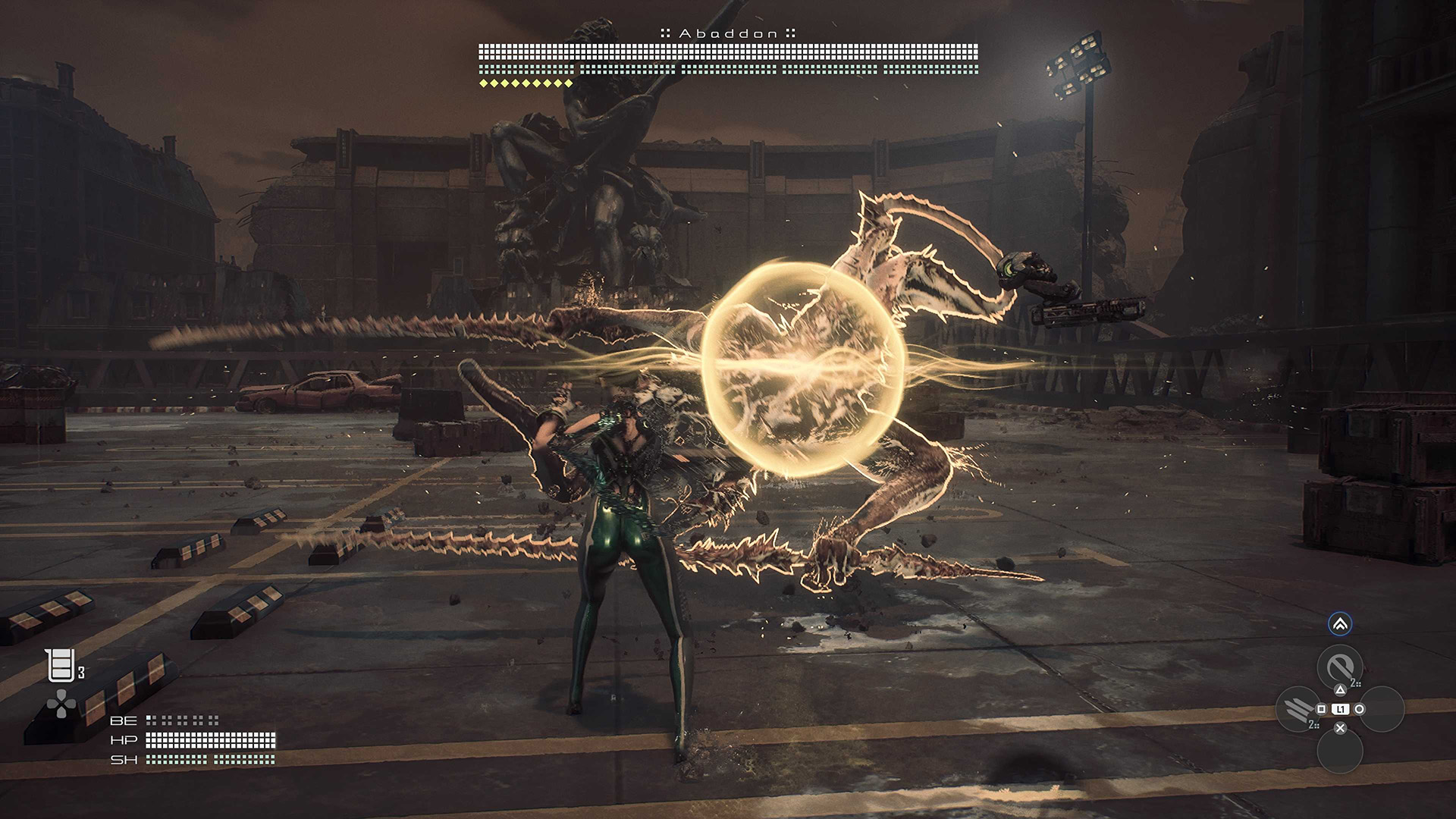
That’s important because enemies require very different approaches. And there are a ton of enemies. At the twenty-hour mark, I was still encountering new enemy types, each with their own variants to keep you on your toes. There’s the usual brutes and ranged enemies, but there are also plenty of unique enemies here that I can’t recall seeing before in other games.
The best part about the enemies is how well their attacks are telegraphed. I couldn’t blame the game when I died, only myself for having poor timing. Even enemies that look like the demon spawn of Groot and a Mind Flayer have very clear indicators for their movements and attacks.
And that goes double for the boss fights. Not only are the designs of the bosses terrifying, the fights themselves are epic. One fight in particular will go down as one of my favourite boss encounters of all time. I love intimate encounters where blades clash with dramatic lighting and epic music. That’s all I’ll say. You need to experience it for yourself.

There’s so much more to Stellar Blade than it’s melee combat, though. One of its greatest strengths is how often it challenges you with new types of gameplay. I didn’t expect to be spending a good chunk of my time fishing in this game, but here we are. Nor did I expect to have my blade taken away for an entire section of the game. Just when you think you’re getting comfortable, a new type of gameplay is thrown into the mix.
Initially the game feels like a FromSoft-inspired ‘Soulslike,’ but it quickly expands to include open-world areas with platforming, a hub world with sidequests, and even horror-infused dungeons. You’re never doing the same activity for long, which keeps the pacing tight, even as the game passes the twenty-hour mark.
There’s plenty of content outside of the main quest, too. Some of my favourite moments in the game came from sidequests given by the citizens of the hub town, Xion. They usually don’t have multiple branching paths or major decisions, but these smaller bite-sized stories are often worth the effort. The same can’t be said for the activities on the message board, though. You can collect gold faster just by clearing out monsters in the Wasteland than by going through the quests a lot of the time.
I highly recommend taking the time to explore the world. The collectibles are a blast to find thanks to some great level design. And the rewards feel meaningful. Whether it’s a new pair of earrings or a pop can – soda for our American friends – they feel tangible.
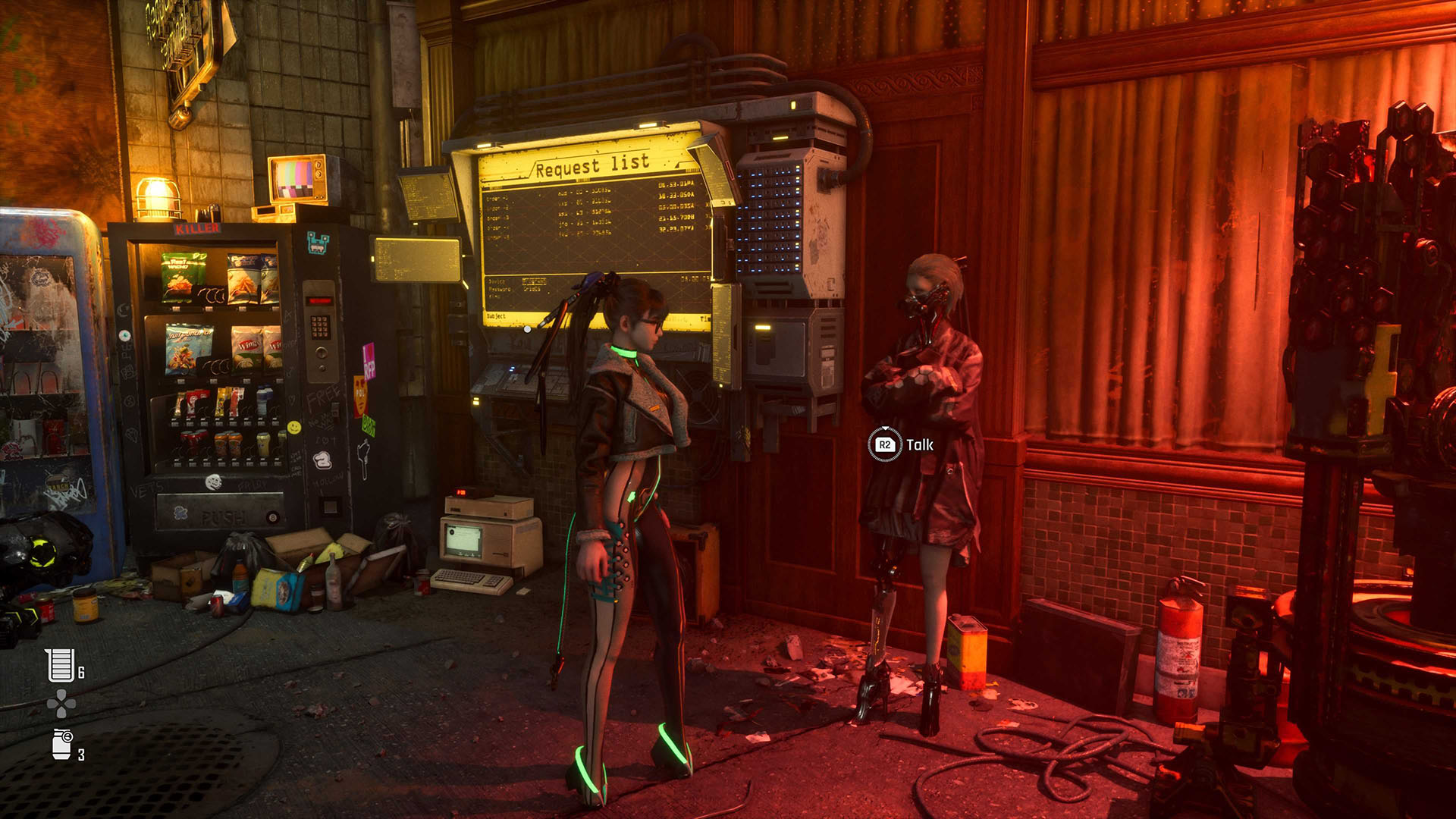
The majority of the collectibles come in the form of memory sticks. These are short diary entries from corpses of humans you’ll find scattered throughout the environment. Most people will end up skimming or skipping these altogether, which I totally understand. We’re all a little tired of journal entries. To their credit, though, the memory sticks are very short and can offer interesting insights. At first they’re just parting wishes or ruminations on the world, but over time, they come to reveal secrets of the world – both in terms of story and hidden objects.
These farewell messages fit the tone of the game, which closely resembles one of its biggest inspirations, Nier Automata. It’s bitter, angry, and confused. But also mournful, reflective, and beautiful. And that comes across perfectly thanks to an incredible soundtrack. The music was a collaborative effort between the in-house team at Shift Up and Nier Automata’s composer, Keiichi Okabe, and his studio, Monaca. I don’t want to fall into hyperbole, but this has a strong chance of being my soundtrack of the year – even with the likes of Final Fantasy VII Rebirth in the mix.
There’s a powerful mix of raw vocal performances, strings, and brass instruments that come together to create an undercurrent of melancholy throughout. When the guitar and synths kick in, there’s a high that only video games can bring where a flow state activates and bosses crumble. Now that’s stimulating.
Where Stellar Blade doesn’t quite hit the right notes is with its narrative. When I originally finished the demo, I thought to myself, “I can’t wait to learn more about how Adam saved EVE and what caused her to trust him.” But it turns out, you never do! That 30-second flashback is all you’re going to get. And that’s true for a lot of important moments throughout the game.
The writers fail to find the humanity in the characters – ironic given the themes of the game. People are filled with likes and dislikes, wants and needs. Beyond killing Naytiba and fighting for the freedom of humanity, EVE and Adam have no personality. And that makes it hard to become invested in their journey. It constantly feels like we’re chasing a MacGuffin.

There are twists and turns, reveals and betrayals, but little of it means anything. Or rather, little of it made me feel anything. There’s a decent plot here — albeit a predictable one — about how the world came into conflict. It asks bit questions with unclear answers, just like sci-fi stories should But the emotional core of it is missing. It feels like we are just given cutscenes where the characters say their feelings without actually showing us why they feel that way.
It’s too bad because the world of Stellar Blade is gorgeous. The various biomes are vast and distinct. The character models are detailed and lavishly designed. And when the music swells, my neurons activate — but my heart remains cold.
In many ways, Stellar Blade is the perfect foil to Nier Automata. That was a game filled with imperfections – repetitive design, dated visuals, and too much ambition for its budget – but it was filled with heart. It still sits as one of my favourite games of all time due to the effect its story had on me.
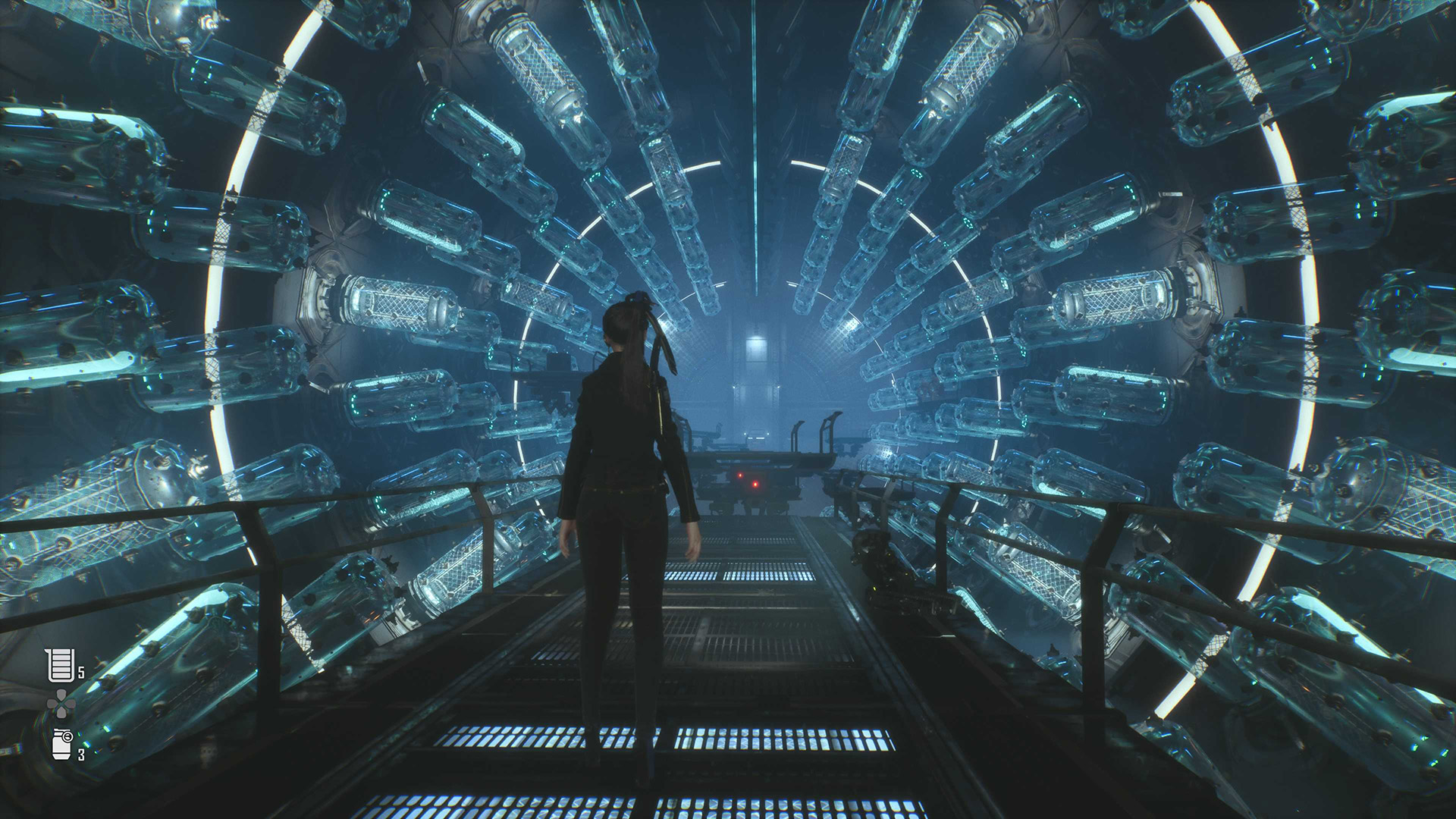
With Stellar Blade, we have a game that executes almost everything flawlessly, from its visuals to its combat, but doesn’t manage to find the emotion in its story.
And that’s okay. It’s a different game with a different focus. I still felt a range of emotions from the game through the experience of playing. The feeling of exploring its vistas as the music poured through my speakers has left an indelible mark.
In a year filled with epic RPGs after my own heart, Stellar Blade has managed to pump in some extra oxygen when I needed it most, offering a welcome break and reinvigorating my passion for playing. It’s an easy recommendation and a great sign of things to come for South Korean game development.
Oh, and one last thing… Tachy > EVE.
Stellar Blade launches on PlayStation 5 on April 26th for $89.99.
MobileSyrup utilizes affiliate partnerships. These partnerships do not influence our editorial content, though we may earn a commission on purchases made via these links, helping fund the journalism provided free on our website.
Image credit: Sony
MobileSyrup may earn a commission from purchases made via our links, which helps fund the journalism we provide free on our website. These links do not influence our editorial content. Support us here.


